A form to speed up how sales and sourcing communicate
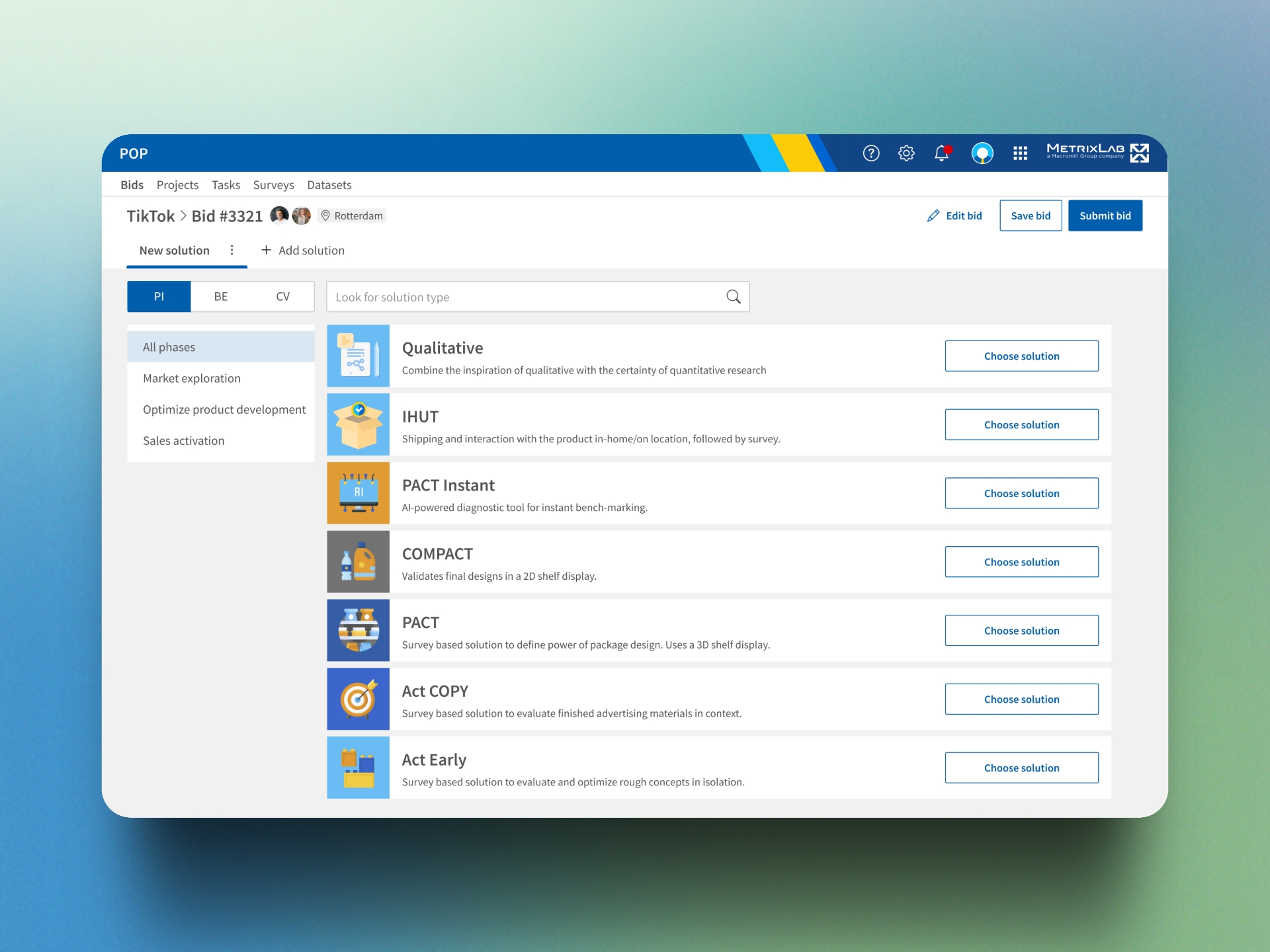
Speed up and increase the precision of communication between sales and research participant sourcing departments in MetrixLab. The proof-of-concept also autofilled the form using machine learning.
A windmill startup making digital surveys
With their office in a windmill in the 90s, MetrixLab is Dutch startup that grew into a 1000+ corporation for digital market research services.
When a client like Lego or Unilever wants to launch a new product in a market, MetrixLab has many custom research packages to help decrease risk for the launch and answer the brand team's questions. By getting in touch with consumers.
A winding business process is a goldmine for optimizing UX
Market research is a winding process, split across different roles and tools. From sales to sourcing participants, conducting research in the field, summarising the data and distilling it into insights that answer the client's question or de-risk a product launch.
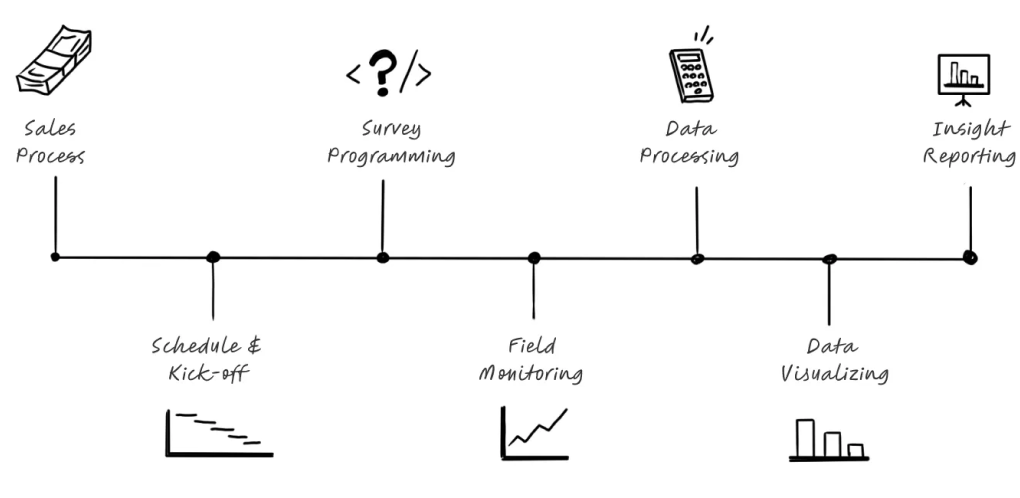
illustration by Daniel de Wit
The form nobody wanted to fill in
Sales and sourcing need to be in contact tightly. Selling a research project means also sourcing the right participants, for the right price, or the company won't make a profit. They communicated with a legacy bid form nobody wanted to fill in - endlessly scrolling, shifting fields. Sales people were checking a couple of random boxes and inputting all the project information in a large text box at the bottom, starting a long email chain of back-and-forth for clarifications.
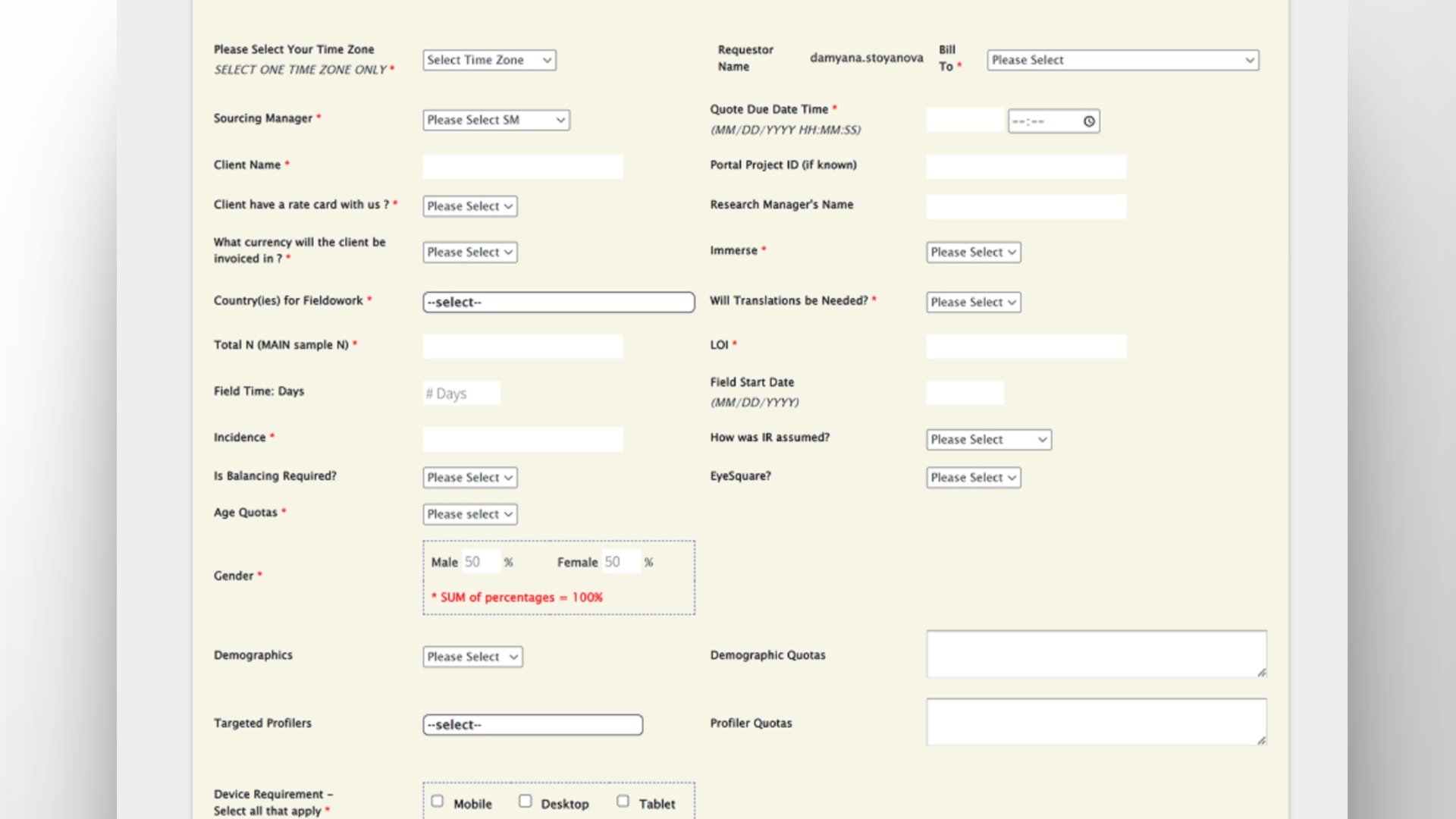
The initial form
Business impact: better profit margins
Faster communication between sales and sourcing means cutting down on operational costs of the back-and-forth, but also getting better project profit margins.
There's an additional benefit: in the large end-to-end system, inputting correct project data in the beginning of the process means it can be used downstream, saving time and costs and providing even more transparency and efficiencies. For example, a researcher in the field can compare their participant data with the accurate information provided by sales and sourcing, instead of filling in everything from scratch again.
Make a form for how salespeople think
→ follow best practices from competitors.
→ review dozens of email chains. Each research project was so custom, which made it hard to create one scaleable form.
→ make a coded prototype in Angular to really decrease risk and make sure it will be efficient.
→ did many user tests.
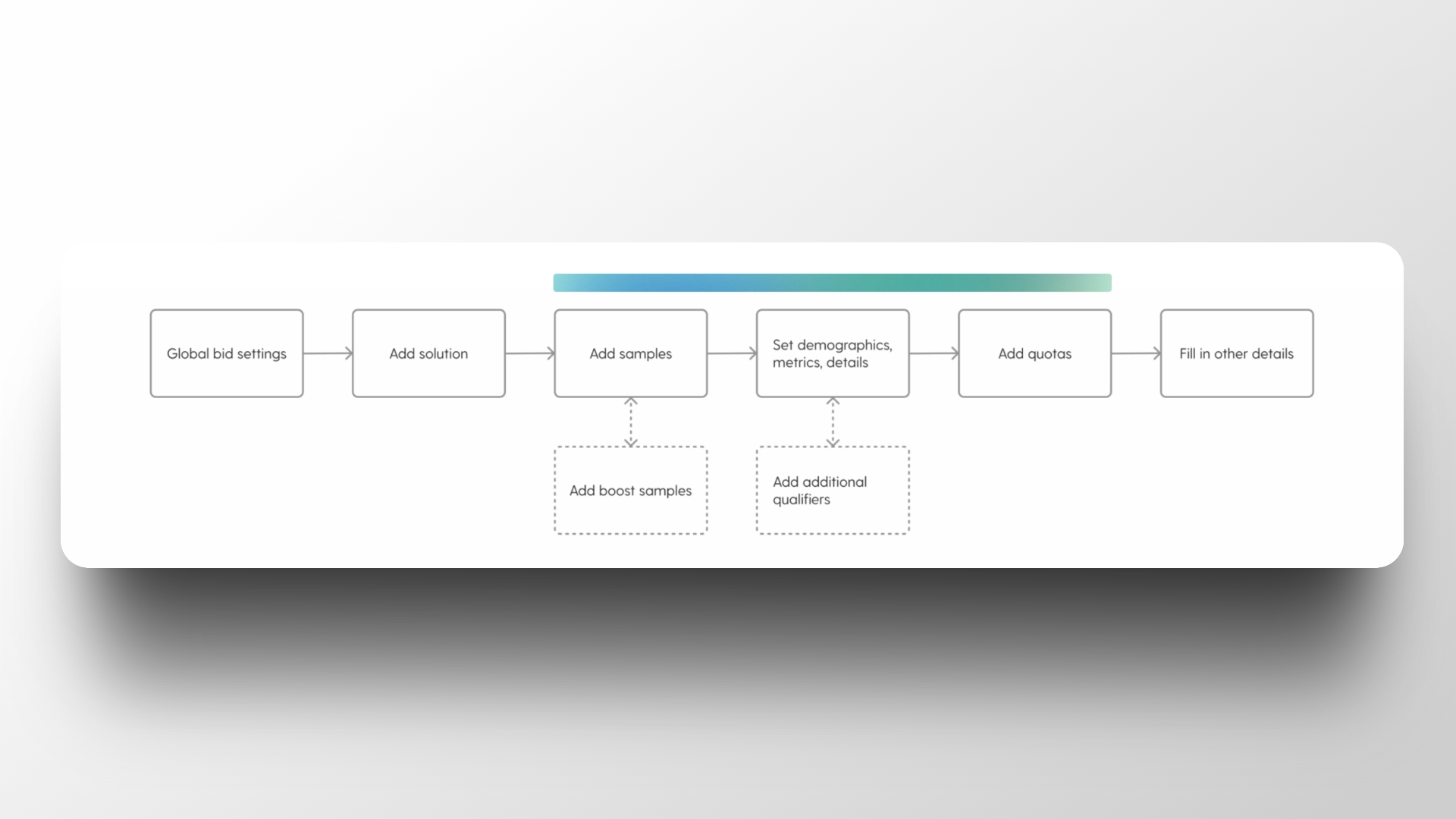
A standard wizard flow would have 7 steps
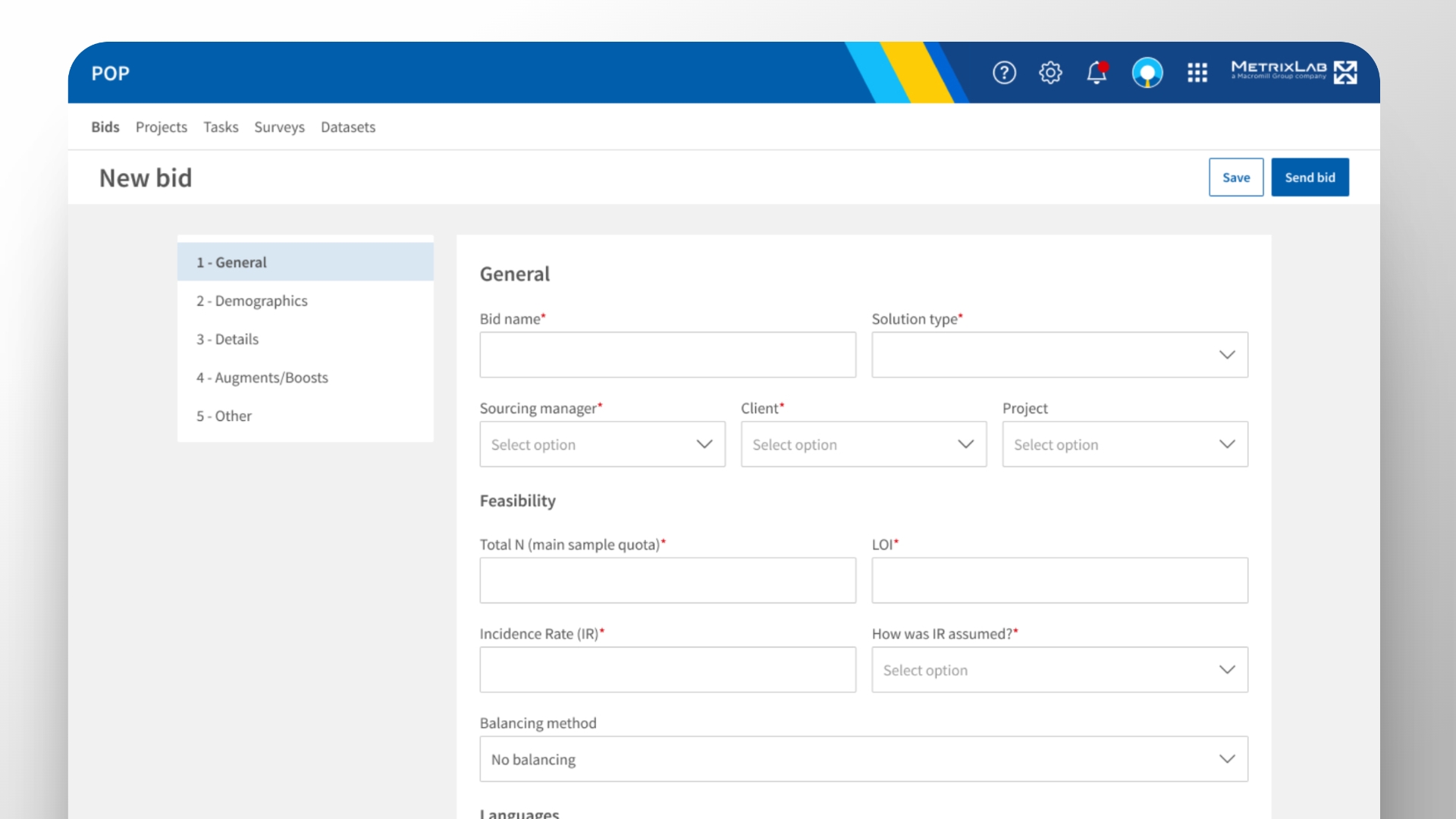
An initial wizard design
Three changes
I designed a three-step form chunking the data into three sections.
1 Research project type - what research package was sold to the ckiient? Quantitative or qualitative? At-home product test?
2 Audience dashboard - how many participants, from which countries, with what demographic profiles
3 Additional details - media types, devices types. What kind of product or advertisement was being tested?
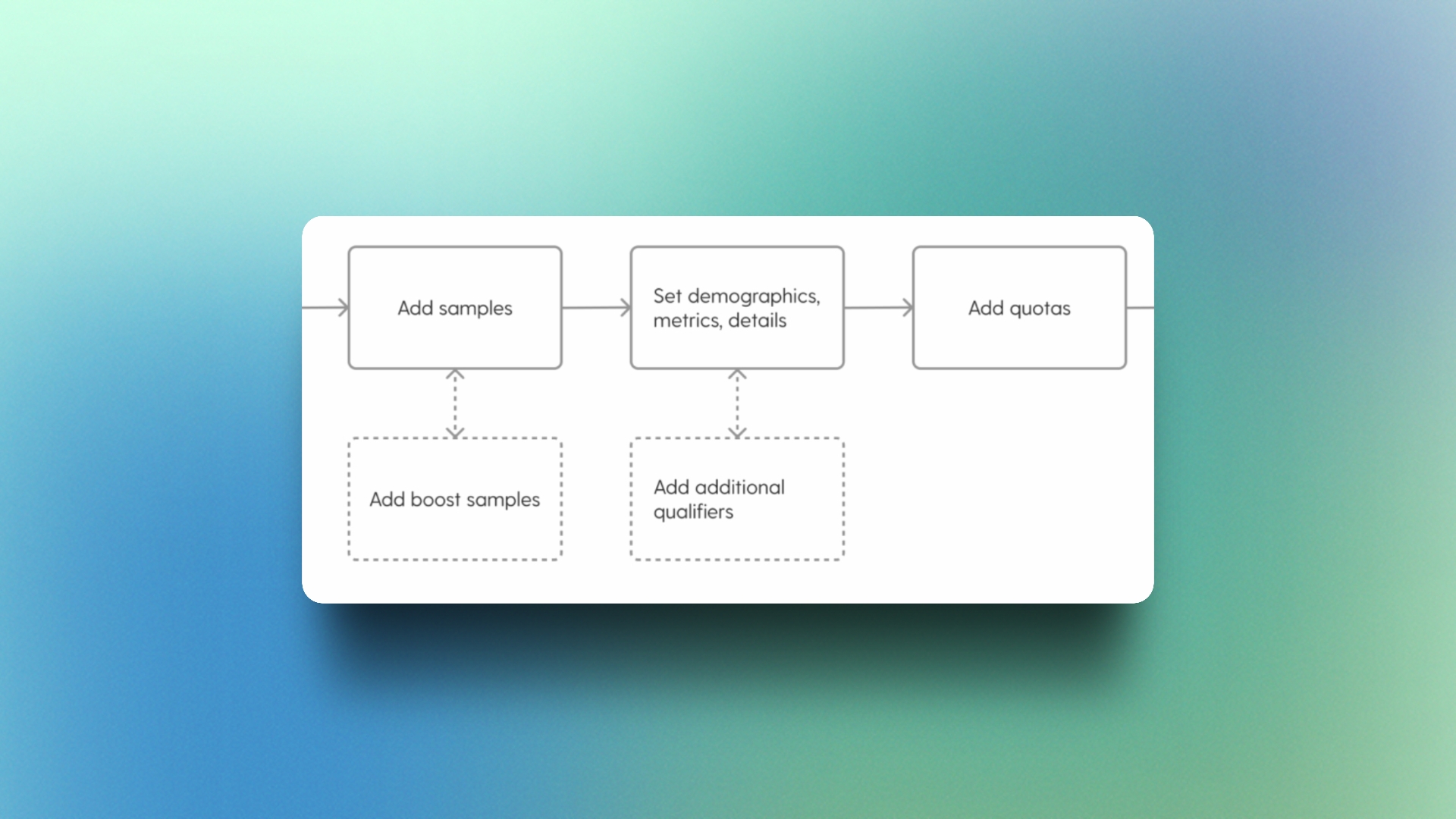
The Audience Dashboard - 3 steps into one
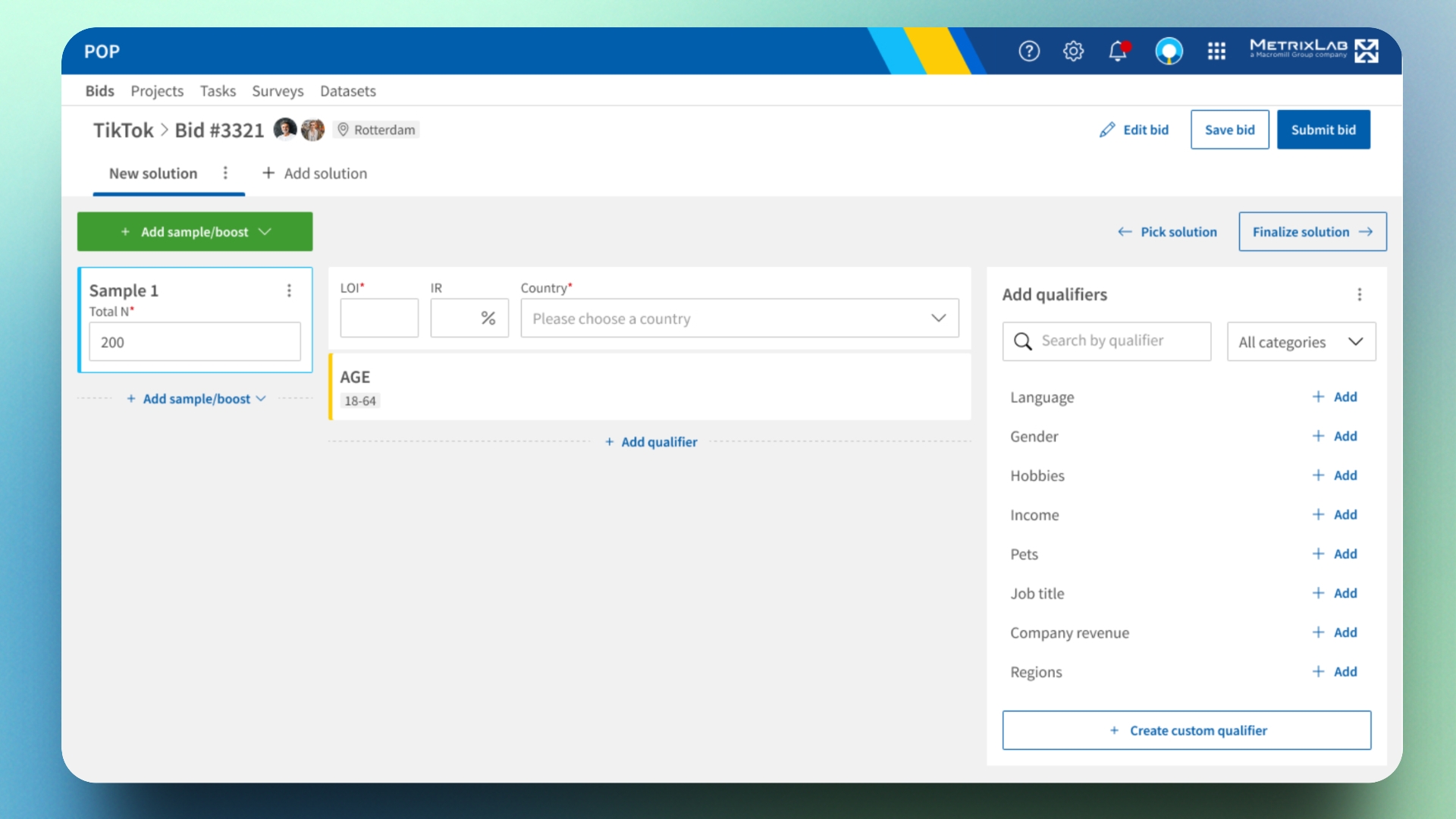
Complexity is good: The Audience Dashboard
Did the form fit how people think?
Short answer: yes. Testing showed me how to mold the form to people's mental model. While they understood the steps, I had to change
→ how people switch the type of audience (booster or a normal one)
→ to have only one country per audience sample (multiple countries per audience sample confused people)
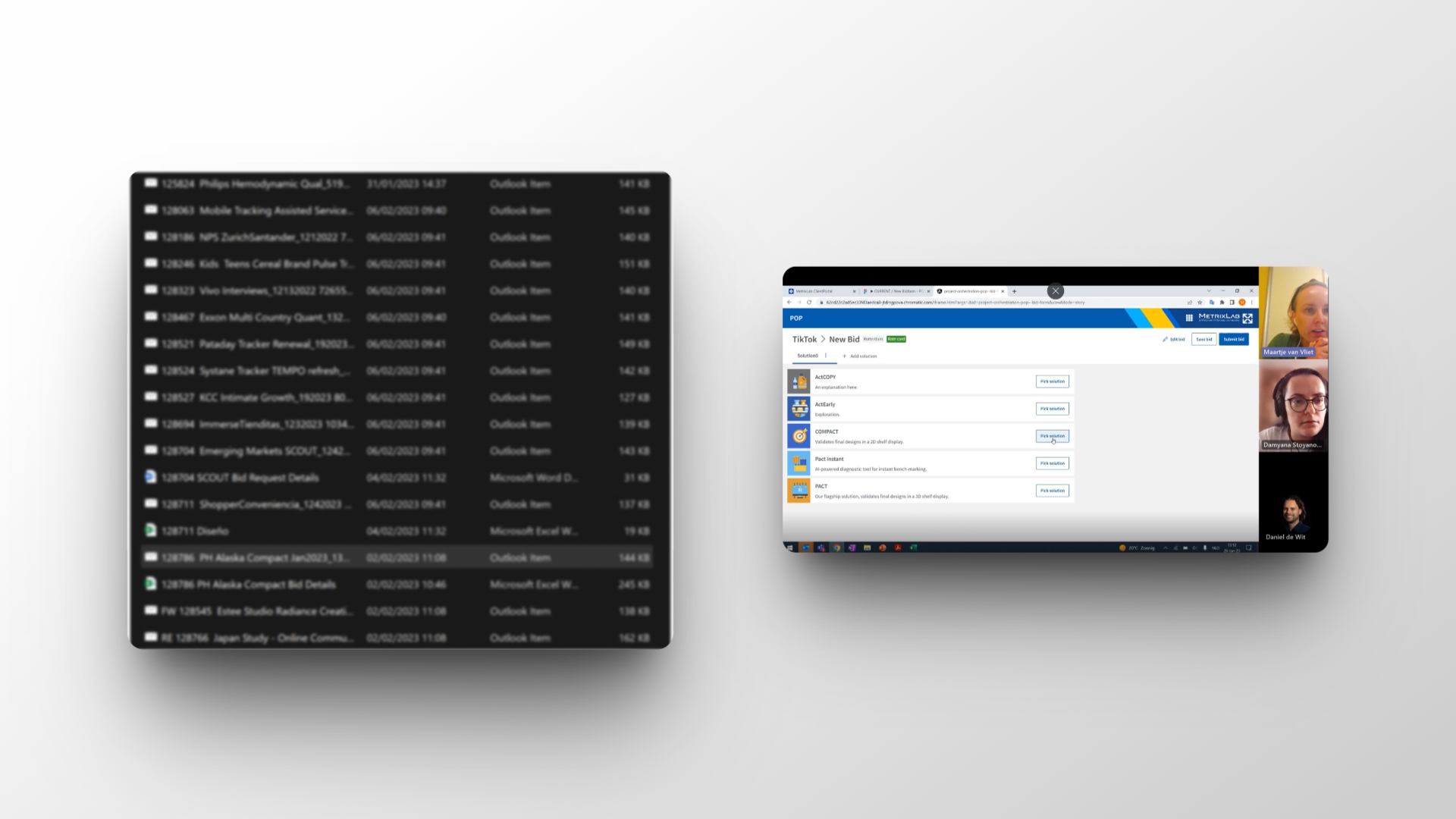
Looking at email chains and user testing the prototype (Redacted for privacy)
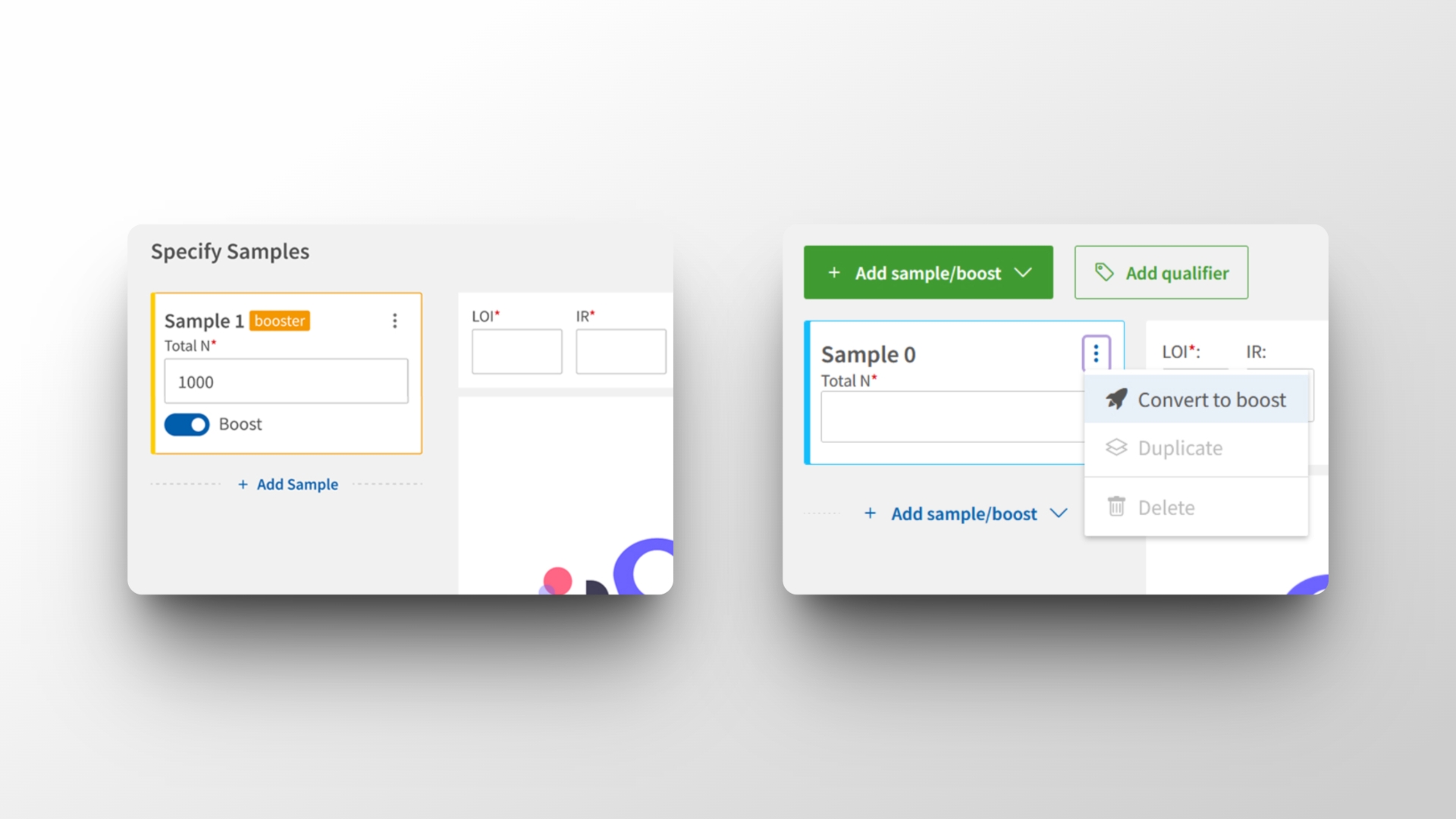
Changing how samples switch between booster and normal
Bonus read: machine learning for structuring free input
We saw during research that people liked to input all data in a large text box at the bottom. I collaborated with a data scientist - he made an API endpoint for a ChatGPT wrapper that could take a salesperson freeform description of an audience and fill out step 2 of the form - the audience profile. I used Storybook and Chromatic to enhance my coded prototype and allow for this free form auto fill
Autofilling the form using machine learning
Next steps
Next, I would have further refined it to cover more research project types, planned API integrations with online participant marketplaces, as well as integrated the data with applications downstream, creating cost efficiencies across the whole business.
The project as well as the whole platform and deaign system were discontinued due to a merger.
Damyana has a deep technical understanding of both programming and product strategy. This is a combination that is very rare amongst designers, and is invaluable for product innovation. (...)
It is a pleasure to work with her, as she is a team-player and a social person. She gives great feedback to her peers and she handles feedback on her own designs very well. I'm confident that she will be very successful in her career as a leader in design.
daniel de wit, lead ux/ui designer